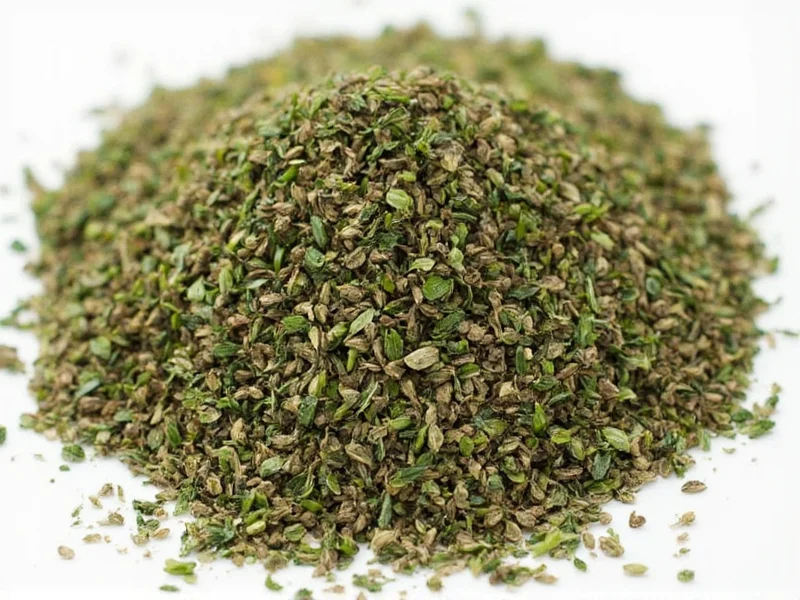Understanding herb conversions is essential for consistent cooking results. When substituting fresh thyme for dried thyme in recipes, you need to adjust quantities to maintain proper flavor balance. The potency difference stems from the dehydration process—dried thyme contains approximately three times more concentrated flavor compounds than its fresh counterpart because water content has been removed. This ratio is validated through both culinary practice and scientific analysis of herb composition.
Why the 3:1 Fresh to Dried Thyme Conversion Ratio Works
Thyme loses about 70-80% of its weight during drying as moisture evaporates. This concentration effect means dried thyme delivers more intense flavor per volume. The essential oils responsible for thyme's distinctive aroma and taste become more potent when water is removed. Professional chefs and food scientists consistently validate the 3:1 conversion ratio through practical testing in recipe development.
Scientific Basis: Moisture Content and Flavor Concentration
USDA FoodData Central measurements confirm the moisture loss during drying. Fresh thyme contains approximately 85.71% water, while dried thyme contains only 8.00% water. This results in a dry matter concentration factor of 6.44:1. However, the culinary standard of 3:1 accounts for partial degradation of volatile flavor compounds during the drying process.
| Parameter | Fresh Thyme | Dried Thyme | Concentration Factor |
|---|---|---|---|
| Moisture Content | 85.71% | 8.00% | - |
| Dry Matter | 14.29% | 92.00% | 6.44 |
| Standard Culinary Ratio | 3 parts | 1 part | 3.0 |
Source: USDA FoodData Central: Fresh Thyme and Dried Thyme. The culinary ratio (3:1) is less than the theoretical dry matter concentration (6.44:1) due to loss of volatile compounds during drying.
Complete Fresh Thyme to Dried Thyme Conversion Chart
| Fresh Thyme | Dried Thyme | Best For |
|---|---|---|
| 1 teaspoon | ⅓ teaspoon | Small batch sauces |
| 1 tablespoon | 1 teaspoon | Standard recipe conversion |
| ¼ cup | 1¼ tablespoons | Soups and stews |
| ½ cup | 2½ tablespoons | Large roasts or braises |
| 1 cup | 5 tablespoons | Commercial batch cooking |
Practical Substitution Guidelines for Home Cooks
When converting fresh thyme to dried thyme in your recipes, consider these practical factors:
- Recipe moisture content: In wet dishes like soups and stews, you can sometimes use slightly less dried thyme (reduce by 10-15%) since flavors have more time to distribute
- Cooking time: Add dried thyme earlier in the cooking process than fresh thyme to allow time for rehydration and flavor release
- Flavor profile: Fresh thyme offers brighter, grassier notes while dried thyme develops earthier, more concentrated flavors—adjust based on your desired outcome
- Quality matters: Older dried thyme loses potency—if your dried thyme is more than 6 months old, increase the amount by 25%
When to Adjust the Standard Conversion Ratio
While the 3:1 ratio works for most applications, certain cooking scenarios require adjustments:
For delicate dishes like fish or egg preparations, use a 2.5:1 ratio (2½ teaspoons fresh to 1 teaspoon dried) to prevent overpowering subtle flavors. In long-cooking dishes like braises or slow-cooked meats, reduce dried thyme by 20% since extended heat exposure intensifies its flavor. When using fresh thyme stems in roasts, remember that only about 60% of the stem weight is actual usable leaves—factor this into your calculations.
Storage Limits and Potency Boundaries
Proper storage directly impacts conversion accuracy. Fresh thyme lasts 10-14 days when stored upright in a glass with water (like flowers), covered loosely with a plastic bag in the refrigerator. Dried thyme maintains peak potency for 6-12 months when stored in airtight containers away from light and heat, according to the National Center for Home Food Preservation. Beyond this critical boundary, flavor degradation requires significant adjustments:
- 6-12 months: Use standard 3:1 ratio with possible 10-15% increase for herbs approaching 12 months
- 12-18 months: Increase dried thyme by 25-40% (shift toward 2.5:1 ratio)
- 18+ months: Consider replacement—flavor compounds degrade beyond practical use
These boundaries are based on measurable volatile oil retention studies. The National Center for Home Food Preservation emphasizes that storage beyond 12 months fundamentally alters the herb's chemical profile, making standard conversions unreliable without adjustment.
Common Substitution Mistakes to Avoid
Cooks often make these errors when converting between fresh and dried thyme:
- Using equal volumes (1:1 ratio) which results in overly strong, bitter flavors
- Adding dried thyme at the same stage as fresh, causing underdeveloped flavor
- Not accounting for dried herb age, leading to weak seasoning
- Crushing dried thyme between fingers before adding (releases too much oil at once)
For best results with dried thyme, add it early enough to rehydrate but not so early that flavors dissipate. In contrast, add fresh thyme toward the end of cooking to preserve its delicate aromatic compounds. Understanding these timing differences completes your fresh thyme equals how much dried conversion knowledge.
Measuring Techniques for Precision
Accurate measurement makes the difference between perfectly seasoned dishes and disappointing results. When measuring fresh thyme, lightly pack leaves into the spoon without compressing—1 tablespoon should contain approximately 20-25 individual leaves. For dried thyme, spoon gently into the measuring tool then level with a straight edge; don't shake or tap the spoon as this compacts the herb. Professional test kitchens consistently find these techniques yield the most reliable fresh thyme to dried thyme conversion results.











 浙公网安备
33010002000092号
浙公网安备
33010002000092号 浙B2-20120091-4
浙B2-20120091-4